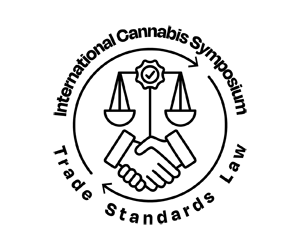Well spotted by Lex Pelger
You can read all his other amazing discoveries here. https://www.cannabinoidsandthepeople.whitewhalecreations.com/
SOURCE
https://pubmed.ncbi.nlm.nih.gov/39107991/
- PMID: 39107991
- DOI: 10.1111/add.16638
Abstract
Background and aim: Since 1996, 38 US states have legalized access to cannabis (medical and/or adult-use recreational). We aimed to estimate the effect of three dimensions of state cannabis policy design – pharmaceutical, permissive and fiscal – on levels of overall, alcohol-impaired, occupant, light truck and pedestrian fatality rates.
Design and setting: Observational study of US states’ overall, alcohol-impaired, occupant, light truck and pedestrian fatalities between 1994 and 2020.
Cases: The unit of analysis was at the state level, consisting of 50 states and 27 years of time series data, resulting in a total of 1350 state-year observations.
Measurements: Fatality rates associated with alcohol-impaired, pedestrian, total occupant, passenger car and light truck fatality rates were obtained from the Fatality Analysis Reporting System of the National Highway Traffic Safety Administration and normalized per 10 billion vehicle miles traveled. State cannabis policies are measured in three bundles (scales): pharmaceutical, permissive and fiscal.
Findings: The pharmaceutical bundle was associated with increases in all fatality rates [β = 0.145; 95% confidence interval (CI) = 0.116-0.173; P < 0.000]. The permissive bundle was associated with lower overall fatality rates (β = -0.319; 95% CI = -0.361 to -0.277; P < 0.000). The fiscal bundle was generally associated with higher fatality rates (β = 0.062; 95% CI = 0.043-0.081; P < 0.000), occupant (β = 0.070; 95% CI = 0.042-0.098; P < 0.000), light trucks (β = 0.049; 95% CI = 0.026-0.072; P < 0.000).
Conclusions: US state cannabis regulations influence traffic safety. Greater permissiveness in US state cannabis regulations does not appear to correlate with traffic fatality rate increases, but greater medicalization and fiscal operation does.
Keywords: cannabis; cannabis legalization; policy evaluation; state cannabis policies; traffic crashes; traffic fatalities.
© 2024 The Author(s). Addiction published by John Wiley & Sons Ltd on behalf of Society for the Study of Addiction.
Similar articles
-
Association of Recreational Cannabis Laws in Colorado and Washington State With Changes in Traffic Fatalities, 2005-2017.JAMA Intern Med. 2020 Aug 1;180(8):1061-1068. doi: 10.1001/jamainternmed.2020.1757.PMID: 32568378 Free PMC article.
-
The association between legalization of cannabis use and traffic deaths in Uruguay.Addiction. 2020 Sep;115(9):1697-1706. doi: 10.1111/add.14994. Epub 2020 Feb 21.PMID: 32003494
-
Revisiting the effect of recreational marijuana on traffic fatalities.Int J Drug Policy. 2023 May;115:104000. doi: 10.1016/j.drugpo.2023.104000. Epub 2023 Mar 24.PMID: 36965303
-
Red light camera interventions for reducing traffic violations and traffic crashes: A systematic review.Campbell Syst Rev. 2020 Jun 29;16(2):e1091. doi: 10.1002/cl2.1091. eCollection 2020 Jun.PMID: 37131412 Free PMC article. Review.
-
The role of the African-American physician in reducing traffic-related injury and death among African Americans: consensus report of the National Medical Association.J Natl Med Assoc. 2002 Feb;94(2):108-18.PMID: 11858225 Free PMC article. Review.
References
REFERENCES
-
- Zeese KB. History of medical marijuana policy in US. Int J Drug Policy. 1999;10(4):319–328. https://doi.org/10.1016/S0955-3959(99)00031-6
-
- Anderson DM, Rees DI. The public health effects of legalizing marijuana. J Econ Literature. 2023;61(1):86–143. https://doi.org/10.1257/jel.20211635
-
- Miller K, Seo B. The effect of cannabis legalization on substance demand and tax revenues. National Tax J. 2021;74(1):107–145. https://doi.org/10.1086/712915
-
- Doussard M. The other green jobs: legal marijuana and the promise of consumption‐driven economic development. J Planning Educ Res. 2019;39(1):79–92. https://doi.org/10.1177/0739456X17719498
-
- Keul A, Eisenhauer B. Making the high country: cannabis tourism in Colorado USA. Ann Leisure Res. 2019;22(2):140–160. https://doi.org/10.1080/11745398.2018.1435291




















